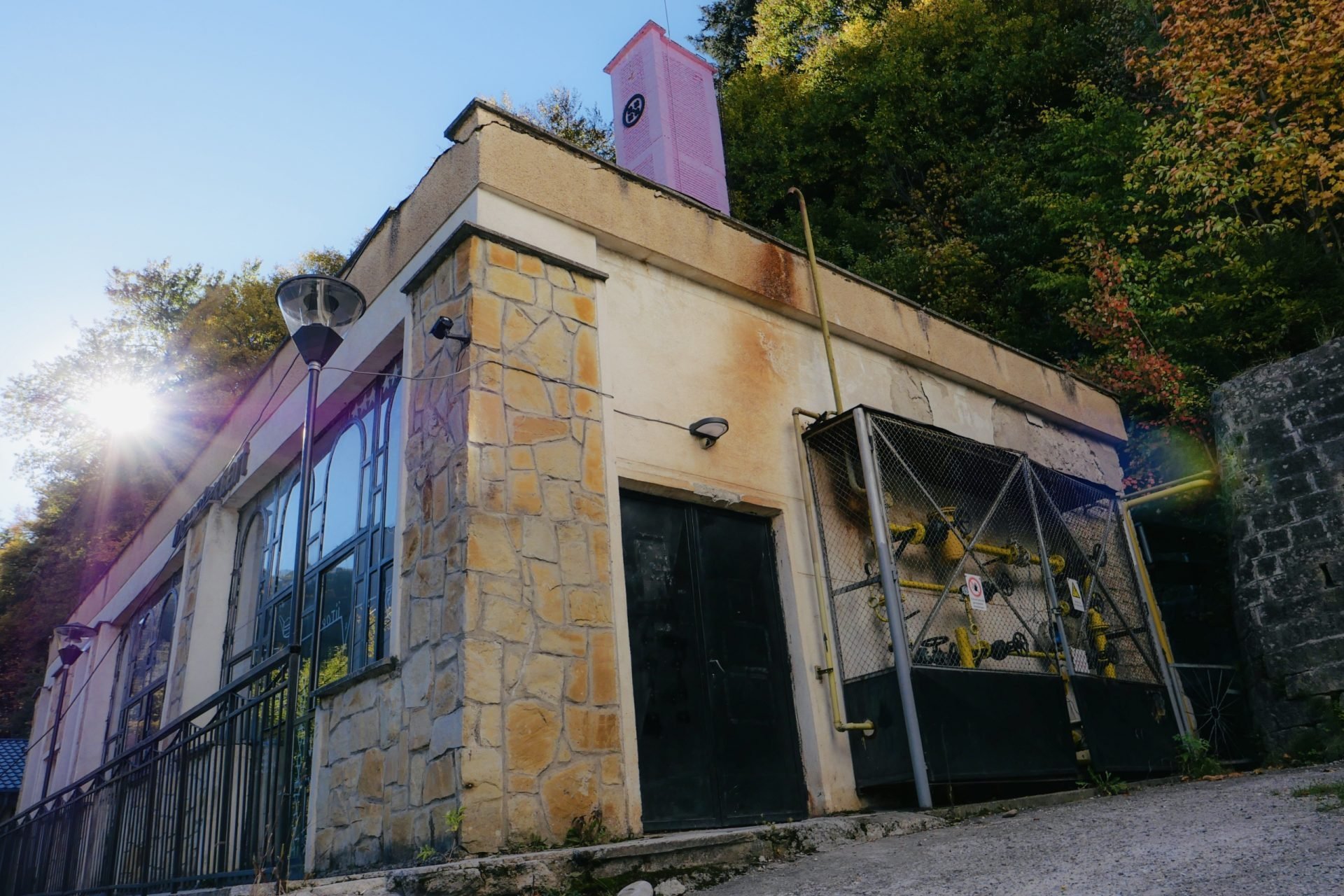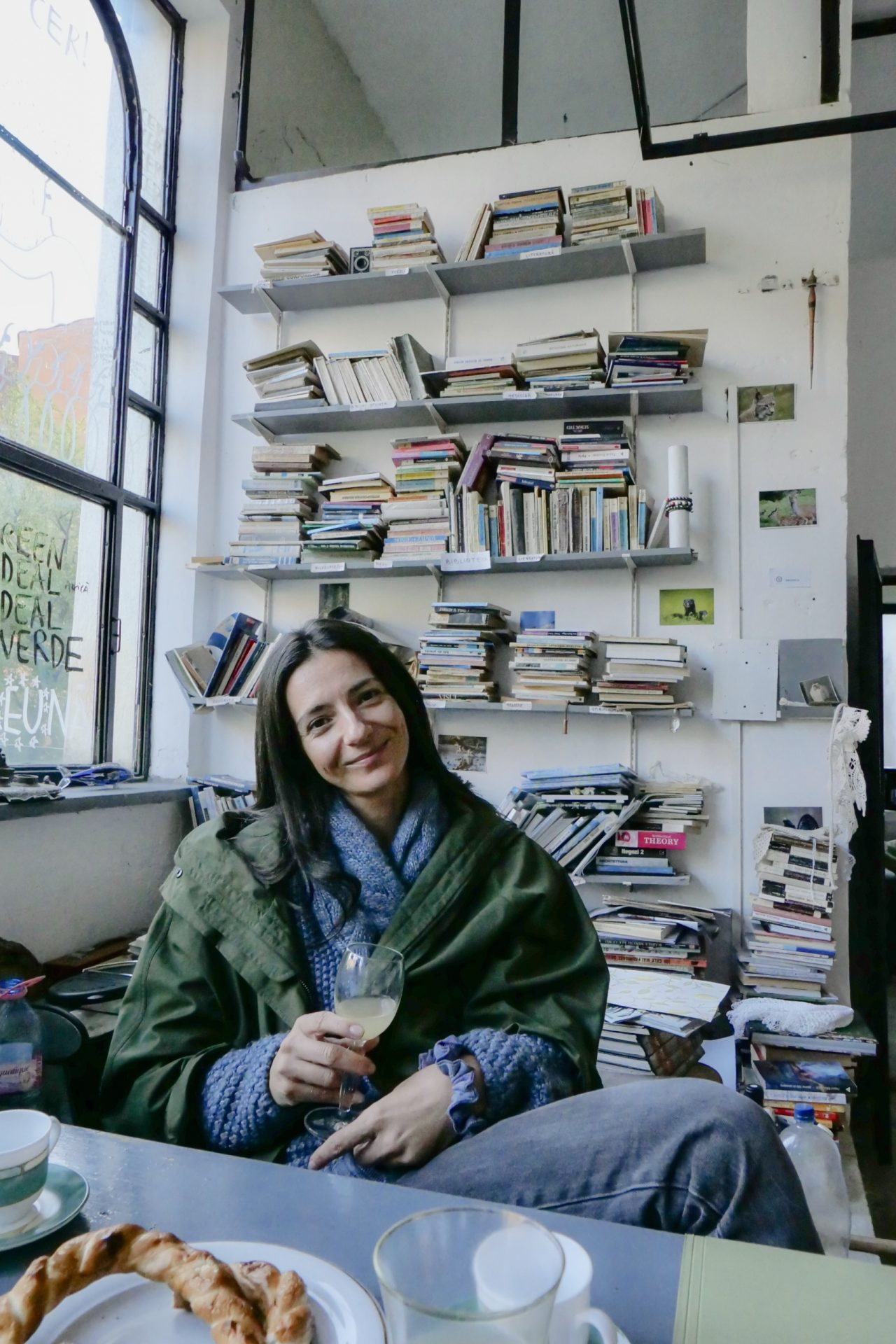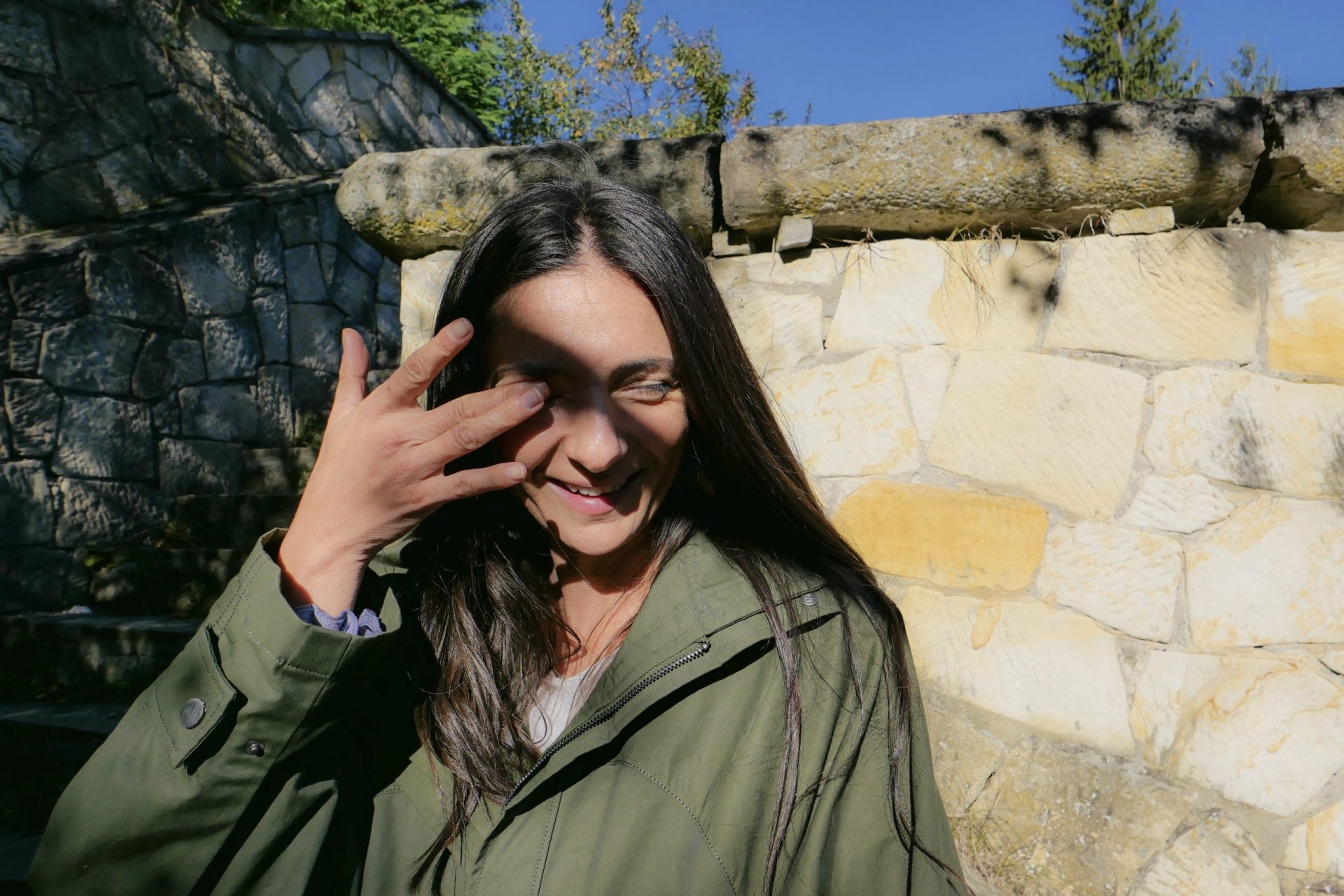Words & Photos: Andrea Dimofte
August 2023
On a mountaintop, surrounded by rich forests and unique natural mineral springs, Slanic Moldova has been, in many ways, forgotten. But this remote town in northern Romania has also become a host to one of the country’s most innovative artistic initiatives – despite being an area with little public funding.
Artist Alina Teodorescu grew up here. After living abroad for many years, she decided to come back and open InContext/Slanic Moldova, a contemporary art and music residency program attracting people from around the world. Through this private initiative, she is bringing a small town back to life.
InContext aims to be an inspiring space for artists in a non-traditional creative environment. Each residency lasts a month and brings in talents from different countries. So far, artists from India, Brazil and Iceland, amongst others, have participated. It also encourages Romanian creators to join, collaborating with both up-and-coming local artists and more established ones, such as Dan Perjovschi.
The program pushes artists to engage with the local community and environment while sharing workshops, film screenings, readings and exhibitions. Its mission is to create a bridge between different geographies, audiences and socio-economic classes to foster critical thinking. It also wants to show how art can boost people’s beliefs in their communities.
Alina has a particular interest in upcycling and continuously explores how we can benefit from it. Sitting cross-legged on the floor in her sunny studio, which she nicknames “centrala,” Alina spoke to me about how art can be created from waste, her motivations to bring artists together, and her life’s journey.
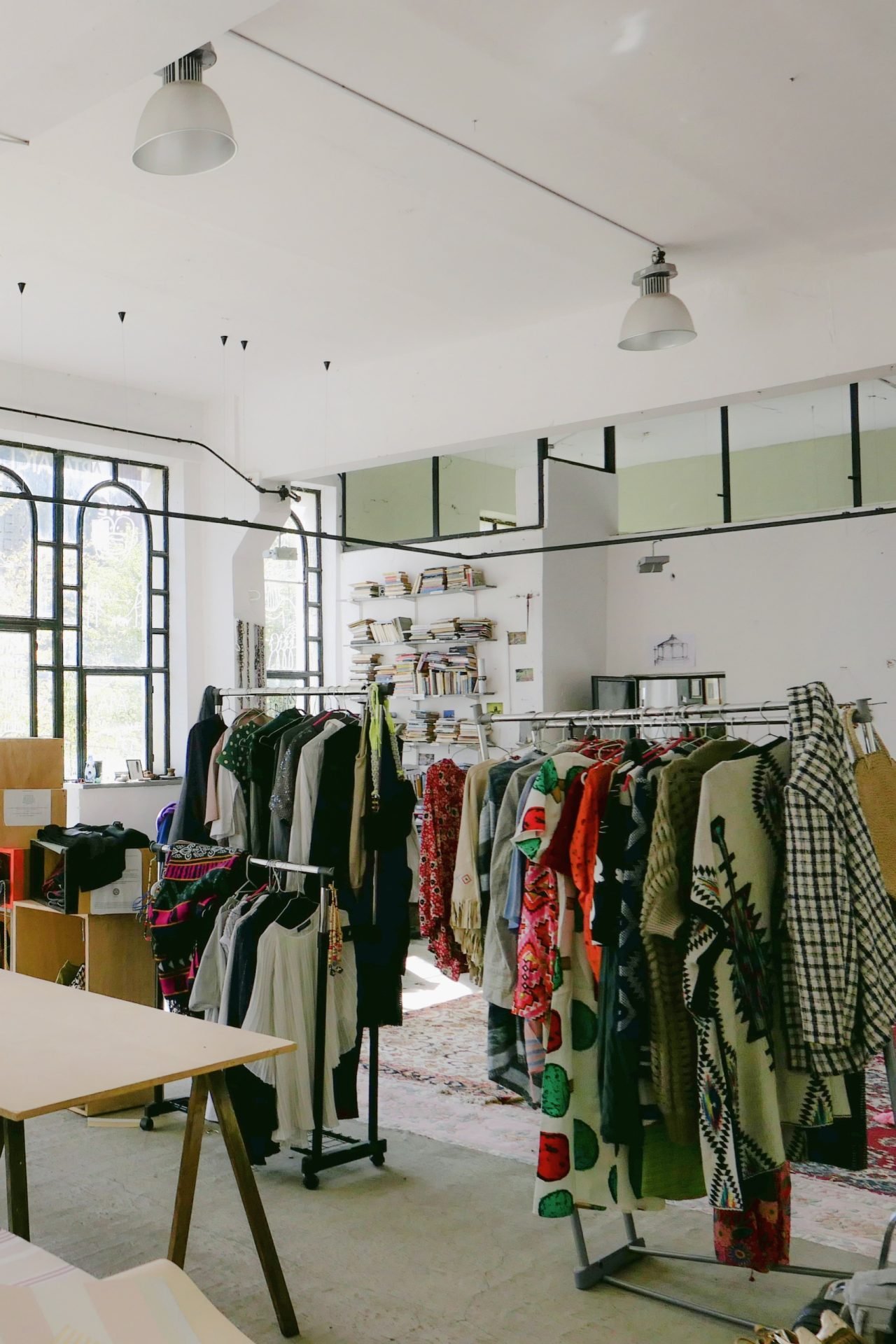
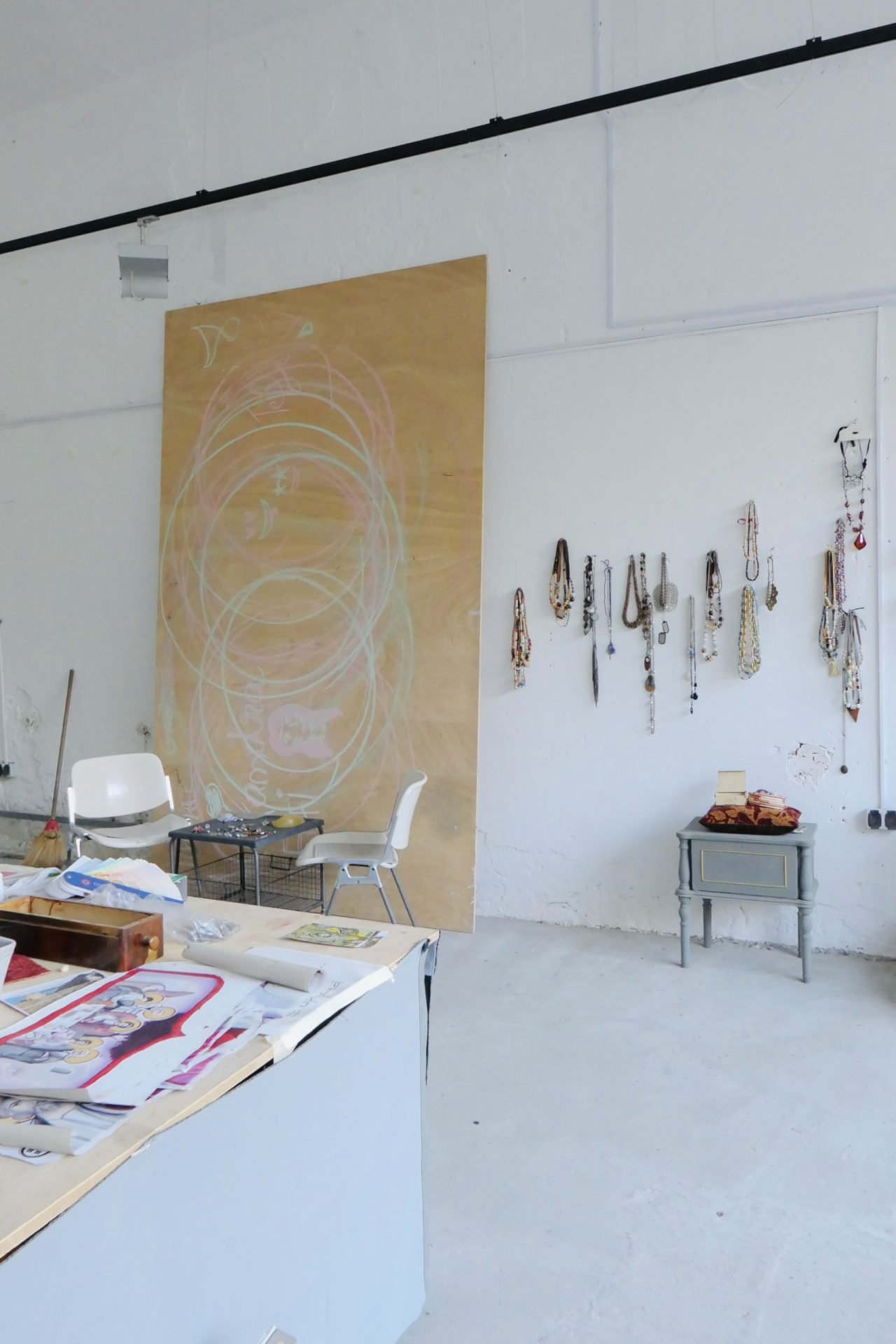
Traveling through Romania, you quickly see two different realities: while cities are vibrant, many rural areas feel abandoned. How was it to grow up here, in Slanic Moldova?
I only understood how special it was to grow up here after many years of living abroad. I had a colorful childhood – there was a lot of green, and for a long time, it was everywhere. Autumn was like a carnival. Then there was a lot of white; sometimes there would be so much white that the roads would have to close and we would stay isolated for days. We learned to have nature exploding in our backyard. The abundance of nature made it so that our activities were always connected to it. We would create farms for snails, and build fences for ponds with frogs. That was normality. There was no real sense of danger because there was no criminality here. Growing up in a small community, everyone knows everyone. My parents were teachers. There were only two schools in town. But we took it all for granted.
As I grew up, I became aware of the existence of big cities – started dreaming of them. There were a lot of foreigners who would come here to visit, so hearing foreign languages was normal. I can’t say our school was very proactive in helping us connect to the foreigners coming in – but there was always a fascination and curiosity about them.
When did you decide to leave Slanic Moldova?
I left Slanic Moldova to go to Bacău when I was 14 to attend a high school specializing in art. I knew I wanted to pursue a path in the arts. Luckily, my father was an art teacher. He helped me prepare for the exams and motivated me to go: he told me I had to work hard, since competition in big cities was high. When I arrived, to my surprise, I realized I was quite good. I felt comfortable. I even entered national competitions. But I realized that there was a pragmatic element to art as well. Though I wanted to continue studying art at university, I switched to architecture at the very last moment.
I guess I got scared of becoming a “hungry artist.” I finished a degree in Interior Architecture and Furniture Design at a university in Bucharest before going to Milan to continue my journey there. Alongside designing, I began writing for architecture and design magazines, which opened up amazing opportunities. I would go to design fairs and would know all design-related businesses. I then came back to Romania to start working on my own projects. I ended up managing larger projects when Romania was booming in design – since many concept stores and malls were being built.
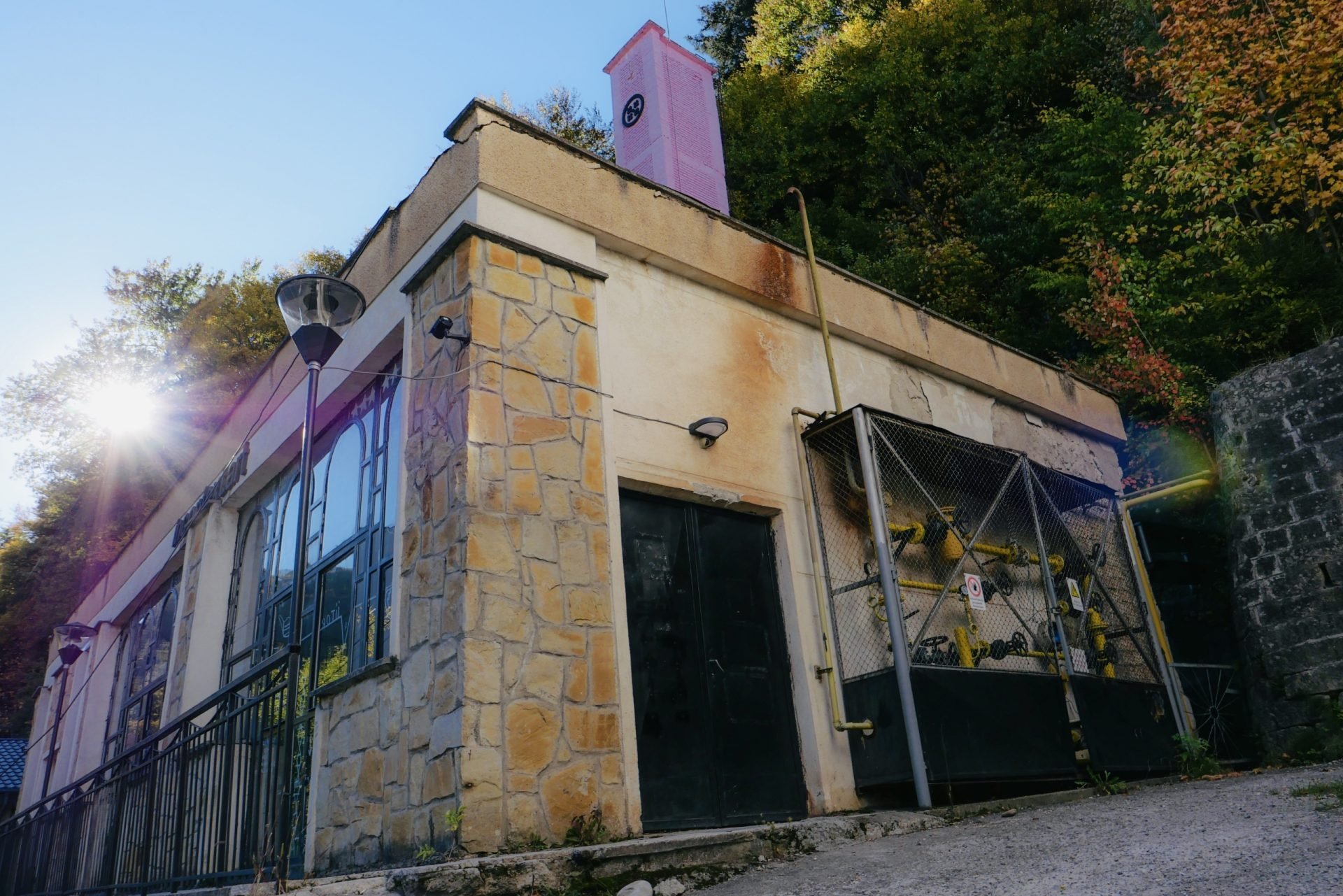
Tell me about your first trip out of the country.
My first trip abroad was in France. I was 16. I went on a class trip with other students from my town because I was painting religious paintings with my father. We painted chapels and created icons. We went to a small village in France to exhibit the icons we had made. I then started traveling for holidays and quickly realized I wanted to experience living abroad as well. This curiosity brought me to Milan.
What made you move away from design and towards art?
After eight years in design, I began to feel like I was suffocating. Like I was only using 30% of my capabilities. Soon after, my friend and father passed away that same year. I felt I lost both my pragmatic and spiritual pillars. It was a difficult time in my life in which I decided to pursue my curiosity in arts. I knew nothing about it, since I had focused my entire life on design. So I packed everything in Bucharest and moved to London. I studied at Sotheby’s. By the end of it, I knew I wanted to create my own art. But I would sit on Tate Modern’s steps and cry. I didn’t come from the Royal College of Art or Royal Saint Martins. I was in my 30s, and it didn’t feel right to suddenly say I was an artist. It was frightening.
On one of those miserable days, I met an Indian artist. Hours of conversation ended in me booking a flight to Bombay. I went there without knowing anything about him or his country. I brought a friend and we arrived at an art studio, one of the most creatively fertile spaces. Poets, philosophers, activists, and painters would gather, debate, and exchange thoughts. I stayed for a few weeks. They welcomed me, encouraged me and even selected some of my works to produce. They taught me how to exhibit and sent me back to London to do just that. That was my stepping stone into the art world.
What kind of medium do you use?
I experimented a lot, and perhaps because of the church windows I would paint as a child, I got into transparencies. I went from painting on glass and printing digital works on transparent surfaces to creating objects and site-specific installations. I am in a constant state of experimentation. Today, I am much more interested in creating art from things found in landfills. I was exposed to the amount of waste we produce through my travels. I’d like to think that if I leave something behind, it is from extracting something bad from the world and putting it into art.
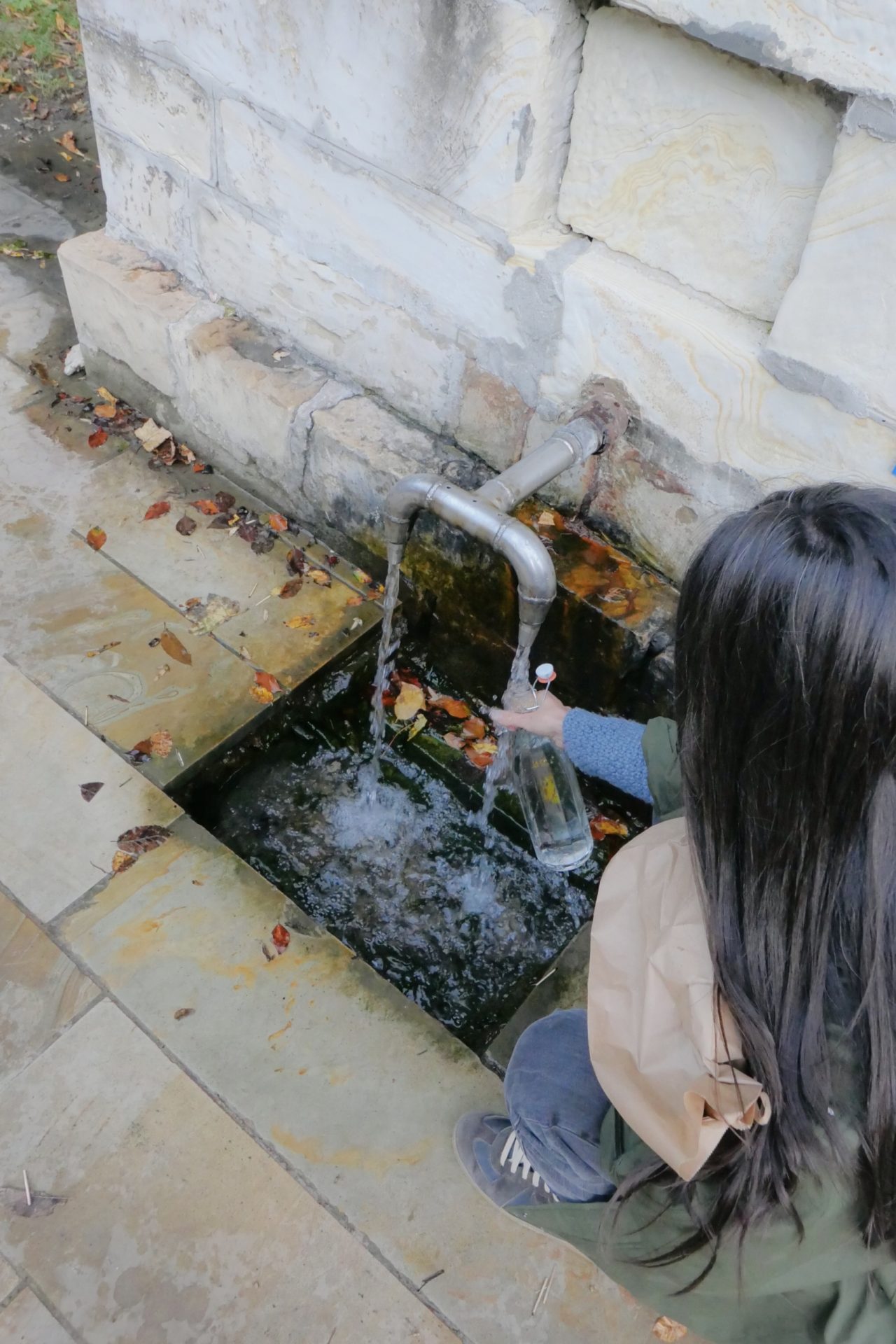

Is this how you became interested in upcycling? And what exactly does it mean?
Yes – I understood the impact trash has on nature. I am a mountain girl and feel connected to it because of my upbringing. Upcycling simply means applying creativity to waste, on materials that are usually discharged. I got so into it that I now think waste is the most beautiful thing: from an aesthetic point of view and the fact that you can bring it back to life. It’s easy to create beauty when you have money. But creativity can be applied to anything, and it’s so much more meaningful to extract it from an ugly place and create something beautiful again. So now my art is filled with wood waste and textiles.
How do locals respond to your upcycling initiatives?
The topics of our projects have always been related to environmental issues, but it was only later that we could implement things in practice. In the third year, we managed to create partnerships with the local garbage management. We also started working with a company that produces compostable bags from Bucharest. We worked with the town hall to deliver free compostable bags to reduce organic waste in the city. We created a three-month pile-up program, where we tried to teach the community a better system to avoid food waste. This system would not only help reduce waste quantity, but also help tackle the bear issue: bears coming into town, feeding off the trash. We had high school volunteers going door to door, offering these bags and information about the benefits of composting. Sadly, our volunteers were oftentimes rejected.
But that summer, we collected two tons of organic waste, the only independent contribution to the first generation of compost that the biggest collecting composting station in the area ever produced.
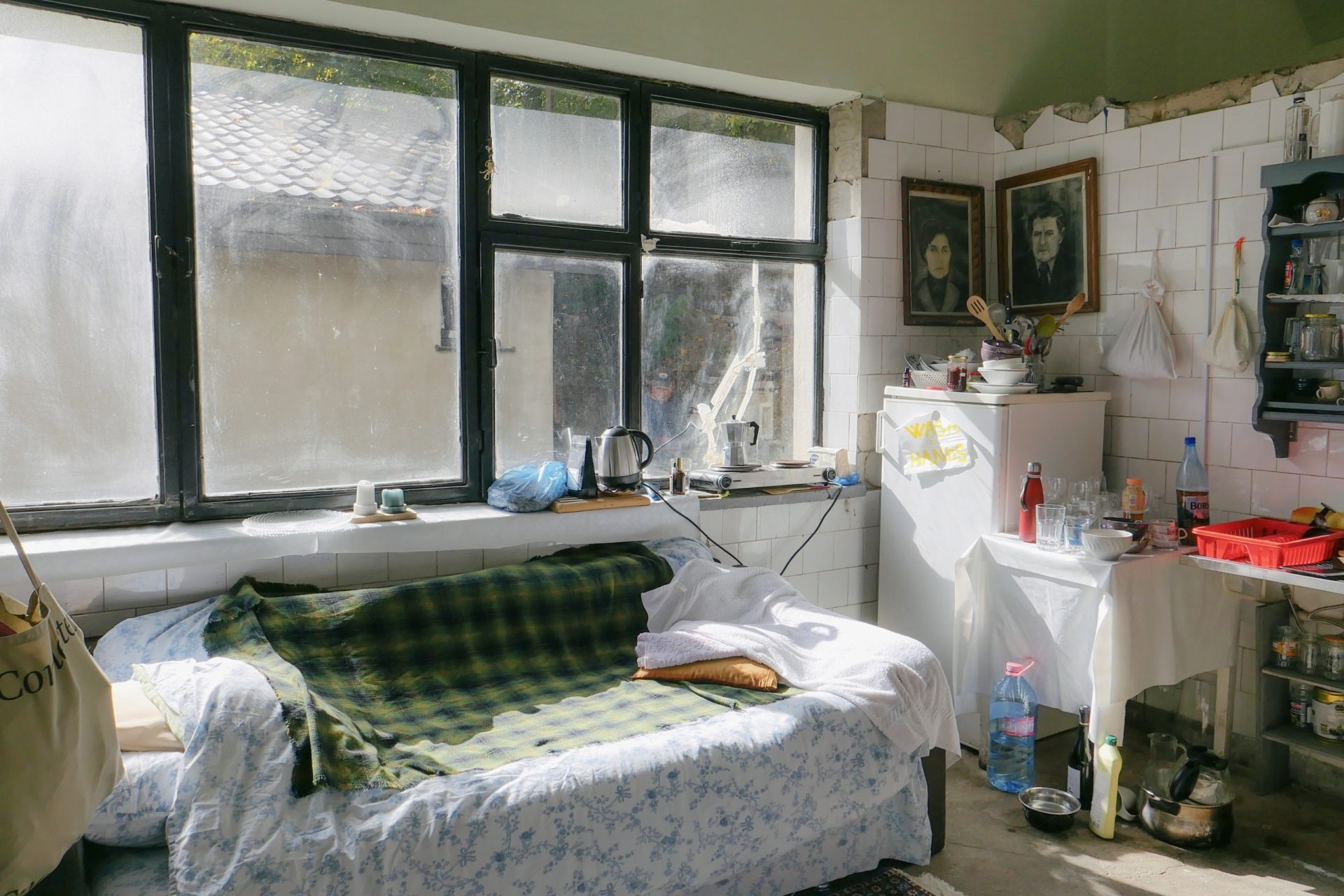
What inspired you to take on such an elaborate project?
InContext was actually born in India. I kept going back for 6 years afterward. It was the most beautiful journey I ever got to experience. I also attended other residencies in Brazil and Greece and started understanding what it brings to an individualistic creative process. I think most artists today are very individualistic. You don’t often get to see groups of artists working together anymore like you used to see in Paris long ago. Residences facilitate a platform for them to share experiences, learn from each other and experience different cultures. I realized that where I come from is very suitable for artist residencies. I started to come back here with a set of new eyes.
And what did you see through these new eyes?
I was curious to learn more about where I come from and the resources here. The town is known for the mineral springs, but even today, we don’t know how to properly use them. There was a time when they were certified, even winning medals in national competitions and against other European water springs. Slanic Moldova was in full bloom in the 1890s, when all the beautiful buildings were built. The town specialized in treatments, targeting mainly gastronomical and respiratory diseases.
Sadly, after the revolution 100 years later, everything faded away. Many things got privatized and sold to people needing more expertise to continue running the town properly. Today the research into benefits of the mineral springs has stopped. A lot of people left for better jobs in big cities or abroad. But the springs continue to exist. And I saw potential.
What are the challenges in bringing contemporary art to a provincial town?
I am going to give a sad answer. People are used to a routine and don’t see the use in diversifying interests. Parents don’t encourage kids to do different things, so we must motivate them extra to attend workshops. We need to offer complimentary food, sometimes even gifts, to convince people to attend our organized activities. It takes a lot of work.
Teenagers dream of going to mainstream festivals like Untold (the largest electronic music festival held in Romania), so they don’t care about alternative, smaller workshops or festivals with experimental music. For instance, we created a small music festival because having music in these forests is just so magical. Music connects people more easily than other art forms – it adds so much to the experience. We combined live concerts with DJ sets and experimental music performances. We worked with passionate people and we will hopefully continue to do so. But while we attracted people who already enjoyed alternative music, many locals simply came for the free drinks and left quickly after. But we keep trying to unite people – pushing for collaboration in a broken system.

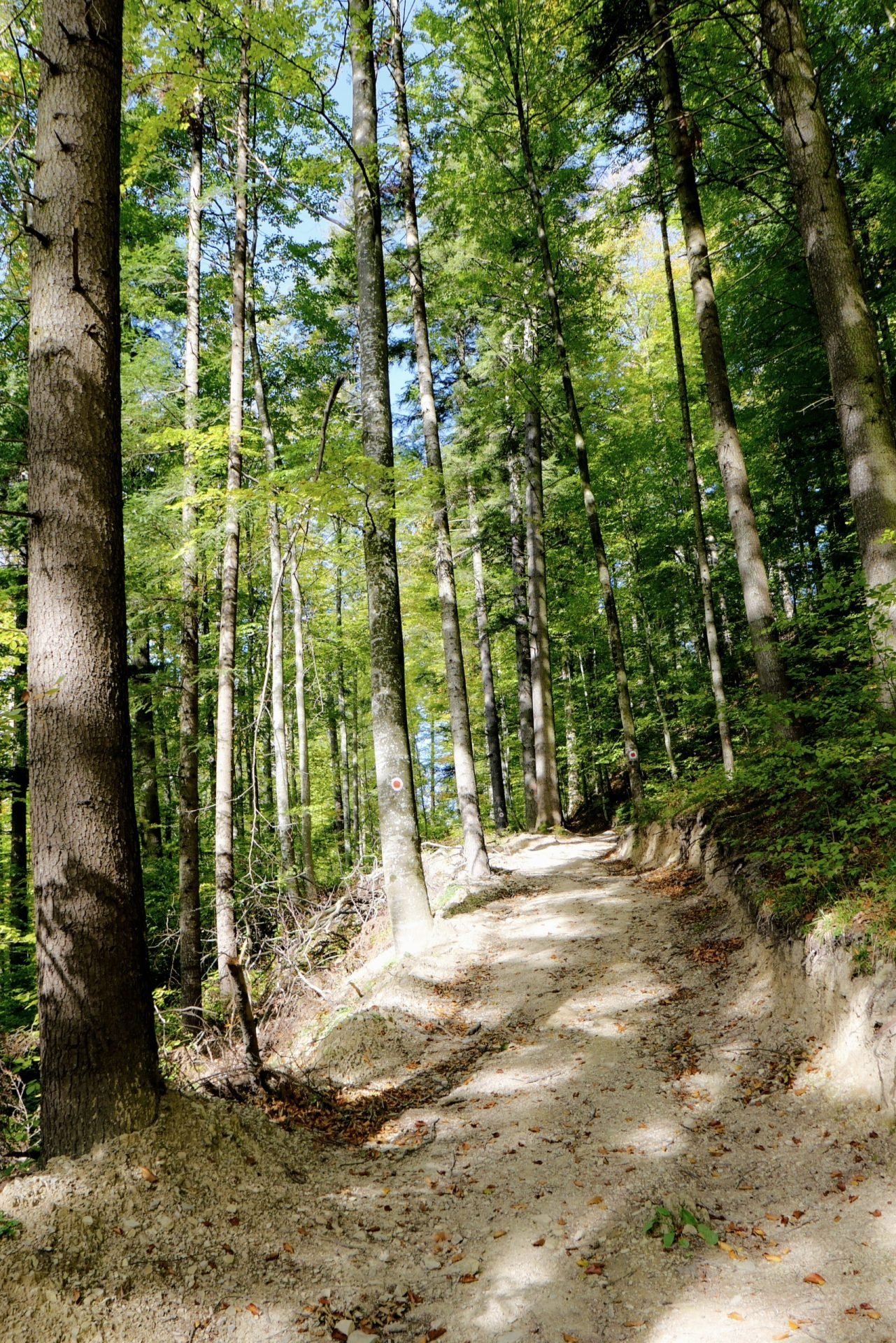
Do the foreign artists and locals mingle well together?
The locals can sometimes be intimidated. Many aren’t fluent in English. It also depends on the culture of the artists we bring in. For example, the Brazilian artists were the most joyous group. They wanted to connect with the locals. The artists from India were more rigorous in their creative process, but more reserved towards the local community. It is interesting to see how they generate different reactions.
How is the dynamic between the artists?
Strong connections are created. It is a beautiful, intense and intimate experience. We laugh together, we cry together. It is also interesting to see how each artist has different creative processes. We try to bring artists together that help each other. Surprisingly, you always have similar characters in a team: there will be a person who helps everyone, just as a person who constantly complains.
Do you have Romanian artists who come?
Yes – we really want to facilitate cultural exchanges and invite Romanian artists to join. We think Romanian artists are at a disadvantage internationally because, sadly, there is not much support from the cultural segments here. We especially try to encourage artists from this area, in Moldova.
The next step would be to create exchange programs and bring Romanian artists to other countries, allowing them to be exhibited there. That would bring things full circle.
Have the local authorities helped you in any way?
We had a good collaboration at the beginning, and I must admit that this project exists because of them. They encouraged and helped us out, not financially, because they didn’t have the budgets, but they helped with some logistics. Not necessarily with promotions because that isn’t their strong point – rather we did the promotions for them. Sadly, as the years went by, we didn’t prove successful in attracting votes for them, so they gave up on us.

How do you see the contemporary art scene evolving in Romania?
I will give another sad answer. I don’t think it’s evolving. It might even be regressing. There’s a lack of long term vision at the governmental level. Because of that, there is no continuity and a lack of expertise in key positions in the cultural segment. There is a high barrier for young people to enter the public system to generate change. Alternative projects aren’t being supported. And because of the lack of funds, projects become competitors instead of coming together to fight for certain causes.
How did your program navigate the uncertainties and hurdles the pandemic brought?
Well, we had to stop. Borders were closed. But we refused to close our doors to the local community. We also focused on becoming financially sustainable. I wrote nine funding applications that were both time-consuming and unsuccessful. European funds are difficult to access, and sadly, local funds too.
Donations are not part of the Romanian psyche. When people walk through the door they don’t see the donation box. They don’t process it. There aren’t many CSR (Corporate Social Responsibility) budgets dedicated to culture and sustainability – most go toward education.
We began implementing upcycling because of my background in design. I see potential in the luxury waste industry – if I can call it that. We started taking expired textile catalogs of high-end design shops and turning them into decoration accessories or fashion. It is a beautiful process resulting in unique products. We also began upcycling furniture and hope to attract a wider public.
We haven’t given up!

